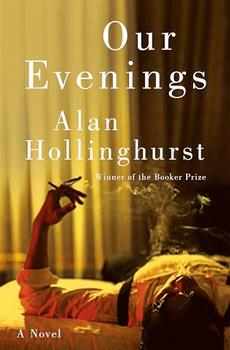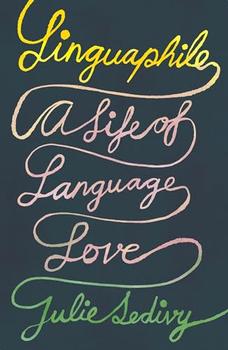
How to pronounce Caseen Gaines: kuh-SEEN
Caseen Gaines discusses how he researched Footnotes, and how the struggles of the creators of Shuffle Along still resonate in the present day.
What inspired you to dig into the story of Shuffle Along and its creators?
I saw the 2016 iteration of Shuffle Along, which told some of the backstage story, the day before it ended its brief Broadway run. I couldn't shake the feeling that its premature ending was a continuation of what had been happening to [the show's creators] Noble Sissle, Eubie Blake, Flournoy Miller and Aubrey Lyles since the 1920s. As I began to dig deeper into each of their lives, there seemed to be something important about not forgetting these four men. They are just a few of countless Black Americans who forever changed this country and have long been denied their due.
Explain what your research process was like--delving into archival materials, recordings, newspaper clippings and other sources.
I spent a lot of time visiting libraries and archives in both Harlem and Baltimore, and loved every second of it. Several of the book's main subjects left behind so much ephemera, audio recordings, even some unfinished and unpublished memoirs. The information was decentralized and required some unearthing, but there seemed to be a never-ending well of information. Initially it felt daunting, but in a way, the wealth of information made it easier for me to focus on the story I was telling and leave out extraneous details. I also developed a relationship with Noble Sissle's son, which has been a real asset to this project.
Shuffle Along was a very different production than previous all-Black theatrical shows--vaudeville and minstrel shows--but it still contained moments where the Black actors wore blackface or played to racial stereotypes. That was a complex dynamic.
Footnotes is set in such a specific moment in American history. Each of the four main subjects were just a generation removed from slavery, and yet all but one were college-educated. That may feel inherently contradictory, but in the 1920s, like today, being a Black American is often to live a life of contradiction, or at least complexity.
Shuffle Along was the brainchild of two Black musicians who performed in tuxedos, and two blackface comedians who trafficked in antebellum humor. This may seem regressive, but it was the opposite; and this balance helped make the show palatable to white audiences and allowed it to play in the Deep South. It also is a clear illustration of the dance people of color do every day to have their best shot at success in America.
Although the creators of Shuffle Along were all Black men, the show also opened doors for Black women and the kinds of roles they were able to play onstage.
Prior to Shuffle Along, the prevailing consensus was that white people, and white women, specifically, would never pay to see Black women on stage unless they were playing a stereotypical role, like a mammy or a jezebel. Sissle, Blake, Miller and Lyles deserve credit for creating legitimate roles for Black women, and also providing opportunities for them to shine in the chorus. For the first time, theater-goers were able to see women as artists: skilled dancers, singers and performers, and not just attractive set dressing like they were in popular shows like Florenz Ziegfeld's Follies. Josephine Baker became a star as a chorine, and there are other women, like Florence Mills, Adelaide Hall and Fredi Washington, who first got their big break in Shuffle Along before reaching superstardom.
Several of the show's creators and musicians spent time in the military and played in military bands, and their experiences abroad were vastly different than their experiences at home in the U.S. How do you think that experience informed the show?
Noble Sissle, in particular, was significantly impacted by his time overseas. He was part of the all-Black 369th Infantry Regiment, better known as the Harlem Hellfighters, and they were instrumental in introducing jazz to Paris. Seeing the way the French responded to culturally Black music reinforced the idea that white audiences in New York might be similarly captivated, and that authenticity mattered when it came to art. Additionally, by serving in the armed forces, Sissle developed a strong desire to be part of creating a more just America. Music was his medium, and Shuffle Along and jazz were means to that end.
What surprised you the most in your research?
I was surprised by how well-documented the lives of my subjects were, particularly in newspapers. There were so many Black publications at the time, and the artists in Footnotes were major celebrities of the day. I uncovered so many vivid anecdotes, and some of my favorites in the narrative are centered around minor characters, like Josephine Baker. Most people envision her as a fearless woman dancing topless in a banana skirt, but in Footnotes, we see her develop from an insecure teenager to an international superstar.
Why do you think the story of Footnotes is particularly relevant today, in a moment of widespread conversations about representation, racism and related issues?
Footnotes is a story about the importance of not only racial representation, but also racial and cultural authenticity. It's a reminder that Black creatives, and more broadly, people from all underrepresented groups, can produce excellent and commercially viable art, if the gatekeepers stay out of their way. But what's equally important is that it's also a story of appropriation, erasure, and the ongoing fight to be acknowledged for your worth. However, there's still an optimism that remains constant throughout the narrative. Footnotes is set against the backdrop of the highest period of racialized violence in the United States since the Civil War, an economic recession, and the aftermath of a global pandemic; yet, even in this landscape, these Black artists were able to achieve what seemed like the impossible.
This interview first ran in Shelf Awareness, Feb 9, 2021, and is reproduced with permission.
Unless otherwise stated, this interview was conducted at the time the book was first published, and is reproduced with permission of the publisher. This interview may not be reproduced or reprinted without permission in writing from the copyright holder.




Great literature cannot grow from a neglected or impoverished soil...
Click Here to find out who said this, as well as discovering other famous literary quotes!
Your guide toexceptional books
BookBrowse seeks out and recommends the best in contemporary fiction and nonfiction—books that not only engage and entertain but also deepen our understanding of ourselves and the world around us.